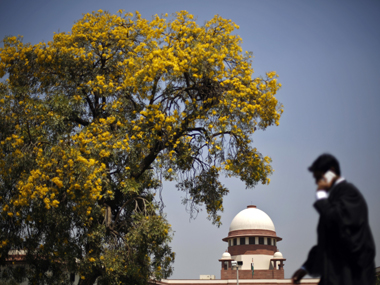by Alok Prasanna How much and how far the state may intervene in the affairs of religious denominations has been the subject of much litigation in India and the judgment of the Supreme Court in Adi Saiva Sivacariyargal Nala Sangam v State of Tamil Nadu (delivered on 16 December) is the latest addition to the corpus of cases.
Supreme court judgementThe petitioners, an association of archakas of temples in Tamil Nadu and some individual archakas, challenged the Government Order (GO) 119 of 2006 issued by the then DMK-led government of Tamil Nadu permitting the appointment of any person, irrespective of caste, who is suitably well versed in Hindu scriptures and rituals as a priest to a Hindu temple under the Tamil Nadu Hindu Religious and Charitable Endowments Act, 1959. The history behind this particular Government Order is an interesting one going back to the Self-Respect movements spearheaded by Periyar and others that campaigned for, among other things, temple entry for Dalits and other castes. It is discussed in much greater depth here, but the crucial purpose of the GO was to eliminate the monopoly of Brahmins as priests in the temples of Tamil Nadu. The idea was to open these positions to all suitable candidates from all castes who had obtained the appropriate training in the centres set up by the government. The petitioners on the other hand contended that this GO went against the fundamental tenets of the Hindu religion, represented here by the agama shastras which prescribed how the rituals were to be carried out and who could be appointed as priests to Hindu temples. It was argued that following the agama shastras were “essential religious practices” protected under Article 26 of the Constitution which if deviated from on the basis of a GO, would amount to an invasion of the right of a denomination to carry out its religious practices. Although it was initially reported that the Supreme Court had struck down the GO, it has in fact upheld the same but with a rider that appointments made under it can be challenged on a case-by-case basis, as being contrary to the agama sastras or customs. But crucially, the agama sastras or customs may themselves be subject to scrutiny by the court to see if they are contrary to the provisions of the Constitution of India. The court has thus tried to strike a balance between two very contradictory impulses in our polity: The right to practice one’s religion and the social reform of religious practices. Indeed, this careful balancing act was necessary in order to harmonise two earlier, seemingly contradictory judgments of the Supreme Court in Seshammal v State of Tamil Nadu (decided by a five-judge Bench in 1972) and N Adithayan v Travancore Devaswom Board (decided by a two-judge Bench in 2002). In Seshammal a reading of one paragraph of the judgment seemed to suggest that any interference with the procedure for appointment prescribed in the agama shastras would be unconstitutional, whereas the Supreme Court in Adithayan had upheld the appointment of a non-Brahmin to the position of a priest in a temple in Kerala, refusing to enforce a custom of appointing only Namboodiri Brahmins as priests. In ASSN Sangam the Court has harmonised the two judgments, locating them in their proper context, and concluding that while agama shastras must no doubt be followed in appointing priests, it doesn’t follow that such practices relating to caste discrimination or untouchability which offend constitutional principles should also be enforced by the Court in the guise of defending “essential religious practice”. Balancing fundamental rights and the state action in larger public interest is a tricky interpretational task that the Supreme Court was set up to do. The Court’s task in ASSN Sangam was made trickier by the need to harmonise two sometimes conflicting rights: the right to equality (which the GO tried to promote) and the right of a denomination to manage its own affairs (which the petitioners alleged was being infringed). In its narrow finding, upholding the GO but allowing it to be subject to challenge where its application goes against religious practices which are not offensive to the Constitution, the Court has in fact placed the Constitutional imperative of equality on a higher pedestal. In one sense, drawing such a fine line is likely to leave both the parties here dissatisfied; the archakas that the GO has not been struck down and the state of Tamil Nadu that it will face a barrage of litigation should it seek to implement this particular GO and make appointments. Unless the state government has braced itself for long-drawn battles in court, it may not make appointments and a somewhat unsatisfactory status quo is likely to prevail. Yet, it is difficult to see how the Supreme Court could have found entirely in favour of one party without also gutting the content of either the right to equality or religious freedom. In this battle between competing rights, the Supreme Court’s judgment may thus be just a cease fire.


)

)
)
)
)
)
)
)
)



